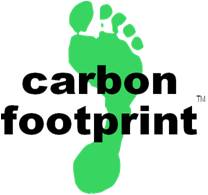Companies are expected to report their performance on key environmental, social and governance (ESG) metrics, to demonstrate that they are measuring and reducing their negative impacts on society. This page contains information about Carbon Reduction Plans, which are increasingly expected when companies tender for large contracts and those with government departments.
What is a Carbon Reduction Plan?
Government issued, Procurement Policy Note (PPN) 06/21 and the linked guidance on 5 June 2021, it sets out how to take account of Carbon Reduction Plans in the procurement of major central government contracts. Members who are tendering for Government contracts (over £5 million per annum) for the provision of vehicle rental or leasing will need to have a carbon reduction plan as part of their tender submission.
PPN 06/21 covers procuring goods and/or services and/or works with an anticipated contract value above £5 million per annum (excluding VAT) which are subject to the Public Contracts Regulations 2015 by Central Government Departments, their Executive Agencies and Non Departmental Public Bodies (in-scope organisations).
Timing
The PPN 06/21 applies to procurements advertised on or after 30 September 2021.
Requirement
PPN 06/21 requires suppliers of in-scope organisations to provide a Carbon Reduction Plan (using the template and technical guidelines provided in the guidance) confirming the supplier’s commitment to achieving Net Zero by 2050 in the UK. It must also set out the environmental management measures that they have in place and which will be in effect and utilised during the performance of the contract.
Key elements of a Carbon Reduction Plan
Carbon Reduction Plans must meet the required standard as set out by the supporting guidance to PPN 06/21. This includes, but is not limited to:
- Confirming the bidding supplier’s commitment to achieving Net Zero by 2050 for their UK operations.
- Providing the supplier's baseline emissions footprint (for the sources included in Scope 1 and 2 of the GHG Protocol, and a defined subset of Scope 3 emissions) - this is the initial year against which all future plans will be compared
- Providing the supplier’s current emissions (for the sources included in Scope 1 and 2 of the GHG Protocol, and a defined subset of Scope 3 emissions) - this covers the most recent year calculated
- Providing the supplier’s carbon reduction targets (for the sources included in Scope 1 and 2 of the GHG Protocol, and a defined subset of Scope 3 emissions) - e.g. We project that carbon emissions will decrease over the next five years to XX tCO2e by 20XX. This is a reduction of XX%
- Emissions reporting must be in CO2e (Carbon Dioxide Equivalent) for the six greenhouse gases covered by the Kyoto Protocol.
- Setting out the environmental management measures in effect, including certification schemes or specific carbon reduction measures you have adopted, and that you will be able to apply when performing the contract and that support achieving Net Zero by 2050.
- Declaration and sign-off by board of directors (or equivalent management body).
- Publication of the Carbon Reduction Plan on the company's website.
Additional considerations
While Carbon Reduction Plans will initially only be introduced for specific contract sizes and in-scope organisations it remains to be seen whether it is adopted for smaller contracts and by local authorities for their procurement projects.
Who can help me produce a Carbon Reduction Plan?
The BVRLA has approached two companies who are able to support members who need assistance producing carbon reduction plans. Costs are reasonable but will depend on the scope of work and your business size.

Carbon Footprint Ltd
Are able to support members in understanding their carbon emissions, setting targets and most importantly developing a carbon management plan in-line with PPN 06/21. For more information, you can visit their website or email [email protected]

Go Climate Positive
Will calculate your carbon footprint properly, help you create a meaningful and practical plan, and complete the compliance documentation for you at a very affordable price.
Visit their website or contact them to discuss how they can help create your carbon reduction plan today.
